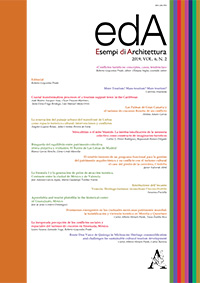Estratto da
ESEMPI DI ARCHITETTURA
International Journal of Architecture and Engineering
La inesperada percepción de los conflictos sociales y espaciales del turismo de cruceros en Ensenada, México. The unexpected perception of the social and spatial cruise tourism con
ESEMPI DI ARCHITETTURA
International Journal of Architecture and Engineering
La inesperada percepción de los conflictos sociales y espaciales del turismo de cruceros en Ensenada, México. The unexpected perception of the social and spatial cruise tourism con

Ensenada, known as the commercial and tourist port of Baja California, has made important investments in recent decades to increase cruise tourism, making it today the second Mexican destination by arrivals, only after Cozumel. This is an increase in the number of boats, and tourists have become the improvement of traffic, in the construction of the tourist jetty, in the rehabilitation of heritage, etc. But, it has also brought some unwanted transformations: mobility difficulties, pollution, increase of bars, gambling and prostitution, etc. Thanks to the support from the Government of Mexico [Public call for research projects of the Secretariat of Public Education for Professional Development Teacher, 2017] we were able to study the urban, architectural and social repercussions of cruise tourism in Ensenada in order to characterize the phenomenon and mitigate social and spatial conflicts warned. The investigation had three fundamental parts: cadastre of the tourist activity linked to the cruises, registration of its social and spatial repercussions and analysis of the perception that neighbors and tourists have of the situation. On one hand, the urban and architectural impact of tourism was confirmed, as well as the existence of a series of latent conflicts; something that we expected as a Research Group. However, the surveys on the perception that visitors and neighbors have of tourism gave us a series of unexpected clues (lessons): the tourist conflicts are a type of social phenomenon of great complexity; as researchers we tend to project our conceptions in the analyzed phenomena; tourists move by unknown aspirations or not recognized by the competent authorities; the neighbors, rather than face conflicts, develop strategies to avoid them, etc. Issues that we consider opportune to share because they give specific and generalizable clues about how to deal with tourist conflicts with guarantees of success.
| pagine: | 145-158 |
| DOI: | 10.4399/978882552546513 |
| data pubblicazione: | Luglio 2019 |
| editore: | Aracne |








